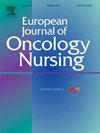Assessment and future projection of brain and central nervous system cancer burden using a modified quality care index: evidence from the Global Burden of Disease 2021
IF 2.7
3区 医学
Q1 NURSING
引用次数: 0
Abstract
Purpose
This study aimed to assess global central nervous system (CNS) cancer care quality and predict future trends, focusing on age, sex, and socioeconomic determinants.
Methods
A cross-sectional study was conducted using data from the Global Burden of Disease (GBD) database (1990–2021). Principal component analysis (PCA) was applied to develop a composite quality of care index (QCI). Stratified analyses were performed by sociodemographic index (SDI), sex, and age groups. Linear mixed-effects models (LMM) were used to evaluate associations, and Bayesian age-period-cohort (BAPC) analysis projected QCI trends from 2022 to 2050.
Results
From 1990 to 2021, global CNS cancer QCI improved but showed significant regional heterogeneity. Japan had the highest QCI (100), while China exhibited the fastest annual growth rate (3.41 %). Females consistently had higher QCI (37.49) compared to males (32.98). QCI declined with advancing age (5–9 years: β = −0.309; 95+ years: β = −2.385) and increased with higher SDI levels (low-middle SDI: β = 0.156; high SDI: β = 1.669). High-SDI countries accounted for 53.13 % of age-related QCI improvements. Projections indicated a sustained increase in global QCI from 2022 to 2050.
Conclusions
This study introduced a novel QCI framework to evaluate global CNS cancer care quality, projecting continued improvements until 2050. High-SDI regions demonstrated superior healthcare outcomes compared to low-SDI areas, with distinct age-related patterns. The findings highlight the urgent need for targeted healthcare investments in low-SDI regions and global collaborations to reduce disparities and enhance healthcare delivery worldwide.
使用改进的质量护理指数评估和未来预测脑和中枢神经系统癌症负担:来自2021年全球疾病负担的证据
目的本研究旨在评估全球中枢神经系统(CNS)癌症护理质量并预测未来趋势,重点关注年龄、性别和社会经济因素。方法采用全球疾病负担(GBD)数据库1990-2021年的数据进行横断面研究。应用主成分分析(PCA)建立综合护理质量指数(QCI)。按社会人口指数(SDI)、性别和年龄组进行分层分析。线性混合效应模型(LMM)用于评估相关性,贝叶斯年龄-时期-队列(BAPC)分析预测了2022年至2050年的QCI趋势。结果从1990年到2021年,全球中枢神经系统癌症QCI有所改善,但存在显著的区域异质性。日本的QCI最高(100),而中国的年增长率最快(3.41%)。女性的QCI(37.49)始终高于男性(32.98)。QCI随着年龄的增长而下降(5-9岁:β = - 0.309; 95岁以上:β = - 2.385),随着SDI水平的升高而增加(中低SDI: β = 0.156;高SDI: β = 1.669)。高sdi国家占年龄相关QCI改善的53.13%。预测显示,从2022年到2050年,全球QCI持续增长。本研究引入了一个新的QCI框架来评估全球中枢神经系统癌症护理质量,预计到2050年将持续改善。与低sdi地区相比,高sdi地区表现出更好的医疗保健结果,并具有明显的年龄相关模式。研究结果强调,迫切需要在低sdi地区进行有针对性的医疗投资,并开展全球合作,以缩小差距,加强全球医疗服务。
本文章由计算机程序翻译,如有差异,请以英文原文为准。
求助全文
约1分钟内获得全文
求助全文
来源期刊
CiteScore
4.40
自引率
3.60%
发文量
109
审稿时长
57 days
期刊介绍:
The European Journal of Oncology Nursing is an international journal which publishes research of direct relevance to patient care, nurse education, management and policy development. EJON is proud to be the official journal of the European Oncology Nursing Society.
The journal publishes the following types of papers:
• Original research articles
• Review articles

 求助内容:
求助内容: 应助结果提醒方式:
应助结果提醒方式:


